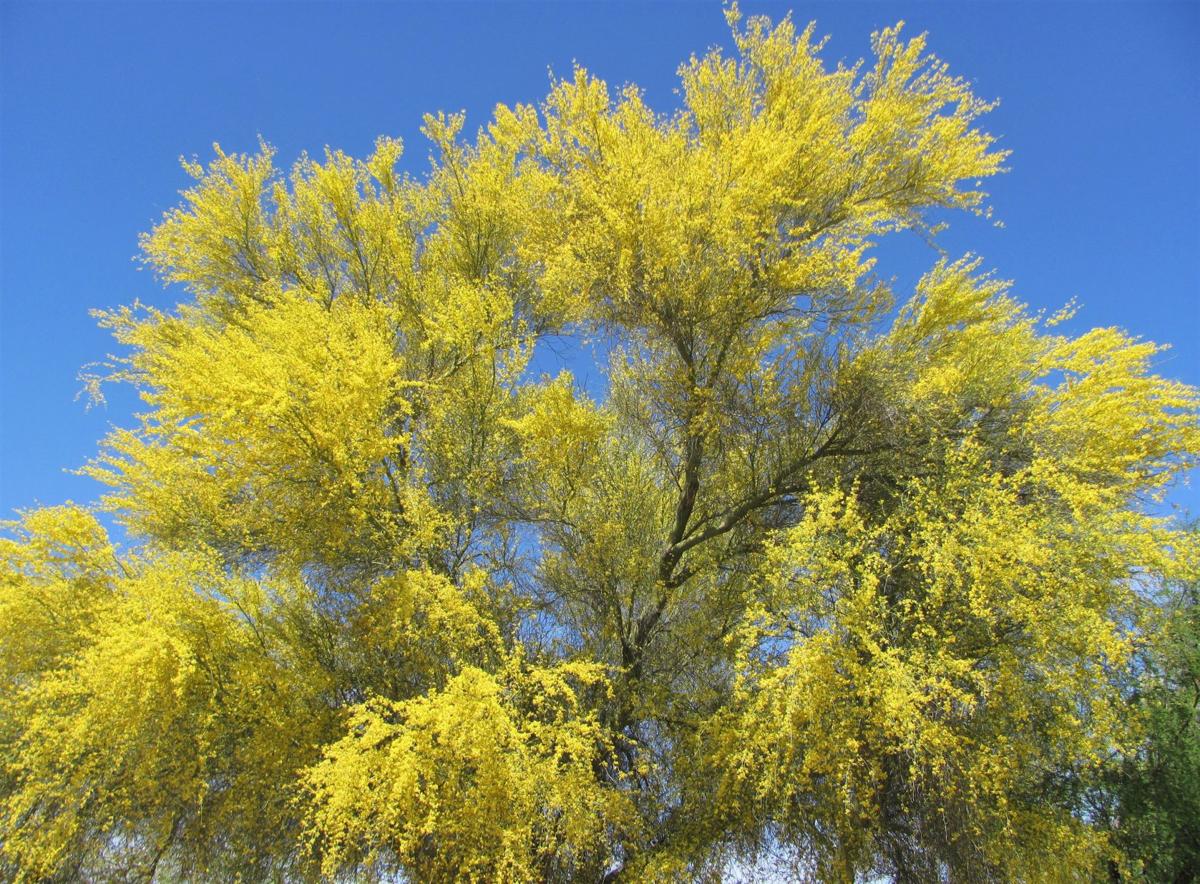If you are facing a bare yard, it can seem overwhelming. All that dirt ... where to begin? But it’s actually a great opportunity to create the garden of your dreams.
And fortunately there are plenty of fast-growing plants to help you make it happen.
Step 1: Observation
First, you will need to observe your yard. Which way is it oriented? Where is the shade and the sun during different seasons? Are there cold spots or warm spots? Where does the prevailing wind come from? It may seem like a pain, especially if you’re eager to get started, but investing a bit of time in this step will save you lots of time, money and headaches down the road. You may not want to wait a whole year to see the patterns of sun and shade, but you can use helpful online calculators to estimate where the shade of objects (like your house or a neighbor's tree) will fall. You can also check out Tucson native Brad Lancaster’s tips on harvesting the sun.
Step 2: Planning
Think about what you want out of your yard. A wildlife space? A place for the dog and kids to play? A shady place to sit and sip coffee? Food? Make a list and then think about how much space you have. Also think about the style of garden you want. Wildlife gardens, Mediterranean gardens, tropical gardens, and even cottage gardens (with the appropriate plant selections) are some styles to consider. Perhaps you want certain colors, or a fragrant garden? Once you have these features figured out, hand-sketch a plan for the yard or use a free online tool like SketchUp to draw up your plan. Include elements such as hardscaping and irrigation as well as plants.
Step 3: Permanent stuff
The first items to install in your yard are things like rainwater harvesting systems, irrigation, fencing and decks or other hardscaping. A bare yard is a wonderful opportunity to plan for both passive and active rainwater harvesting. You may also be able to put in a graywater system to water your plants. Also plan for a backup irrigation system. Once you have these items in, they will be difficult and expensive to move, so make sure you have a plan.
Step 4: Soil improvement
Once all of your permanent and hardscaping elements are installed, the next critical step is to think about your soil. Soil in urban areas is usually not native —it’s been brought in by developers or previous homeowners. However, it will probably still be alkaline (as our soils tend to be) and will likely have the caliche hardpan known so well in our climate. If you plan on planting anything but native trees, you will have to add some organic matter in the form of compost and/or composted animal manure to the soil. After your plants are in, you will also need to bring in mulch, so be sure to budget for this as well.
Step 5: The plants!
As the old saying goes, the best time to plant a tree was 20 years ago. With this in mind, install the trees first. Not only are they the foundation of your garden, but in our climate they provide that essential garden element — shade! You will want fast-growing trees and shrubs if you want to fill in your yard quickly and add greenery, privacy, shade, and color. Here are some suggestions:
Fast-growing native trees
- Palo verde (Cercidium or Parkinsonia spp.)
- Desert willow (Chilopsis linearis)
- Mesquite (Prosopsis spp.)
- Palo brea (Cercidium or Parkinsonia praecox)
Fast-growing non-native trees
- Evergreen elm (Ulmus parvifolia)
- Willow acacia (Acacia salicina)
- Indian rosewood (Dalbergia sisoo)
- Afghan pine (Pinus eldarica)
Fast-growing large shrubs
- Mexican bird-of-paradise (Ceasalpinia or Erythrostemon mexicanus)
- Bush dalea (Dalea pulchra)
- Hopseed bush (Dodonaea viscosa)
- Texas sage (Leucophyllum spp.)
- Green feathery senna (Senna artemisioides v. filifolia)
- Arizona yellow bells (Tecoma stans v. angustata)
- Quail bush (Atriplex lentiformis)
Once these basics are in you can look forward to future projects such as growing food, installation of ponds or other water features and planting of smaller plants.





